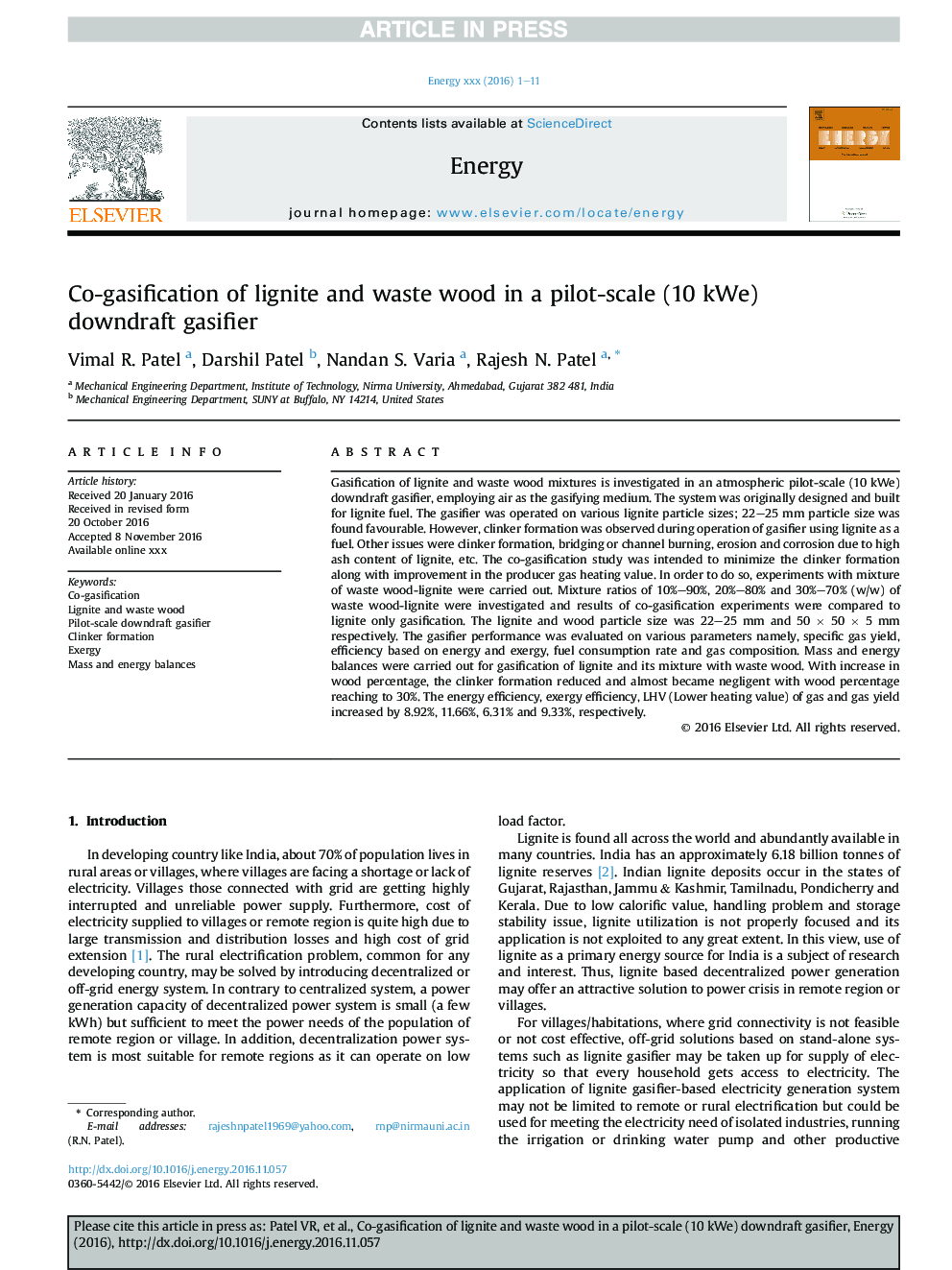| Article ID | Journal | Published Year | Pages | File Type |
|---|---|---|---|---|
| 5476925 | Energy | 2017 | 11 Pages |
Abstract
Gasification of lignite and waste wood mixtures is investigated in an atmospheric pilot-scale (10Â kWe) downdraft gasifier, employing air as the gasifying medium. The system was originally designed and built for lignite fuel. The gasifier was operated on various lignite particle sizes; 22-25Â mm particle size was found favourable. However, clinker formation was observed during operation of gasifier using lignite as a fuel. Other issues were clinker formation, bridging or channel burning, erosion and corrosion due to high ash content of lignite, etc. The co-gasification study was intended to minimize the clinker formation along with improvement in the producer gas heating value. In order to do so, experiments with mixture of waste wood-lignite were carried out. Mixture ratios of 10%-90%, 20%-80% and 30%-70% (w/w) of waste wood-lignite were investigated and results of co-gasification experiments were compared to lignite only gasification. The lignite and wood particle size was 22-25Â mm and 50Â ÃÂ 50Â ÃÂ 5Â mm respectively. The gasifier performance was evaluated on various parameters namely, specific gas yield, efficiency based on energy and exergy, fuel consumption rate and gas composition. Mass and energy balances were carried out for gasification of lignite and its mixture with waste wood. With increase in wood percentage, the clinker formation reduced and almost became negligent with wood percentage reaching to 30%. The energy efficiency, exergy efficiency, LHV (Lower heating value) of gas and gas yield increased by 8.92%, 11.66%, 6.31% and 9.33%, respectively.
Related Topics
Physical Sciences and Engineering
Energy
Energy (General)
Authors
Vimal R. Patel, Darshil Patel, Nandan Varia, Rajesh N. Patel,
